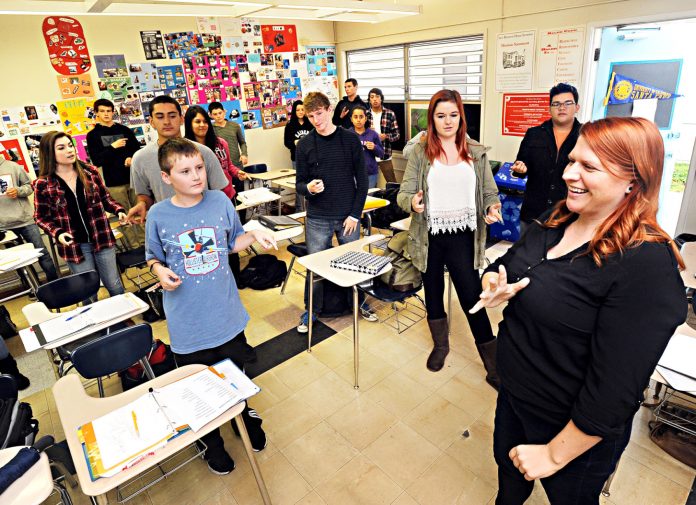
The average class size for most San Benito High School courses hovered slightly higher than 30 students in the fall of 2015-16, according to a staff report shared with trustees.
Physical Education classes were generally larger, while advanced placement, special education andEnglish language learner intervention classes were smaller. State education code sets limits for the maximum number of students per classroom in grades K-8—where rooms max out at between 29 and 33 pupils—but the restrictions do not apply to high schools.
“Class size–I’ve looked into it quite a bit—and I think that obviously we’re governed by two kind of laws that we operate by,” said Superintendent John Perales. “One of them being that we want to do what’s best for the kids. The other is we only have so much money to do what’s best for the kids, so it makes our lives kind of difficult sometimes.”
In math, the department’s average class size was about 30 students with individual courses ranging from an average of 20 students in an AP Calculus B/C to an average of 37 students in geometry.
In English, the department’s average class size was about 33 students with individual courses ranging from an average of 29 students in AP courses to an average of 36 students in junior-level regular English. The English language development courses—meant to provide English language learners with intensive intervention—were generally half the size of the other courses and averaged between 11 and 20 students.
For P.E., the department’s average class sizes were larger and included about 48 students. The weight training classes had the highest class-size average with about 53 students. The weight strength/power classes had the smallest class-size average with about 43 students.
Some districts have class-size caps, and unions advocate for additional pay for teachers instructing more than a set number of students, Perales explained. The AP class-size numbers looked very good, said Perales, who noted that smaller sizes for courses with heavy writing components made sense as teachers have to grade all those papers.
Class size should depend on the needs of students, Perales said. Courses where students require intervention or have special needs should be smaller so teachers can get to each student, the superintendent explained. But Perales remembers seeing a teacher instruct an advanced class with 57 students and the kids flourished, he said.
“I think our class sizes are pretty good,” the superintendent said. “The reality is, we only have so much money to hire teachers and we do the best we can with class size.”









